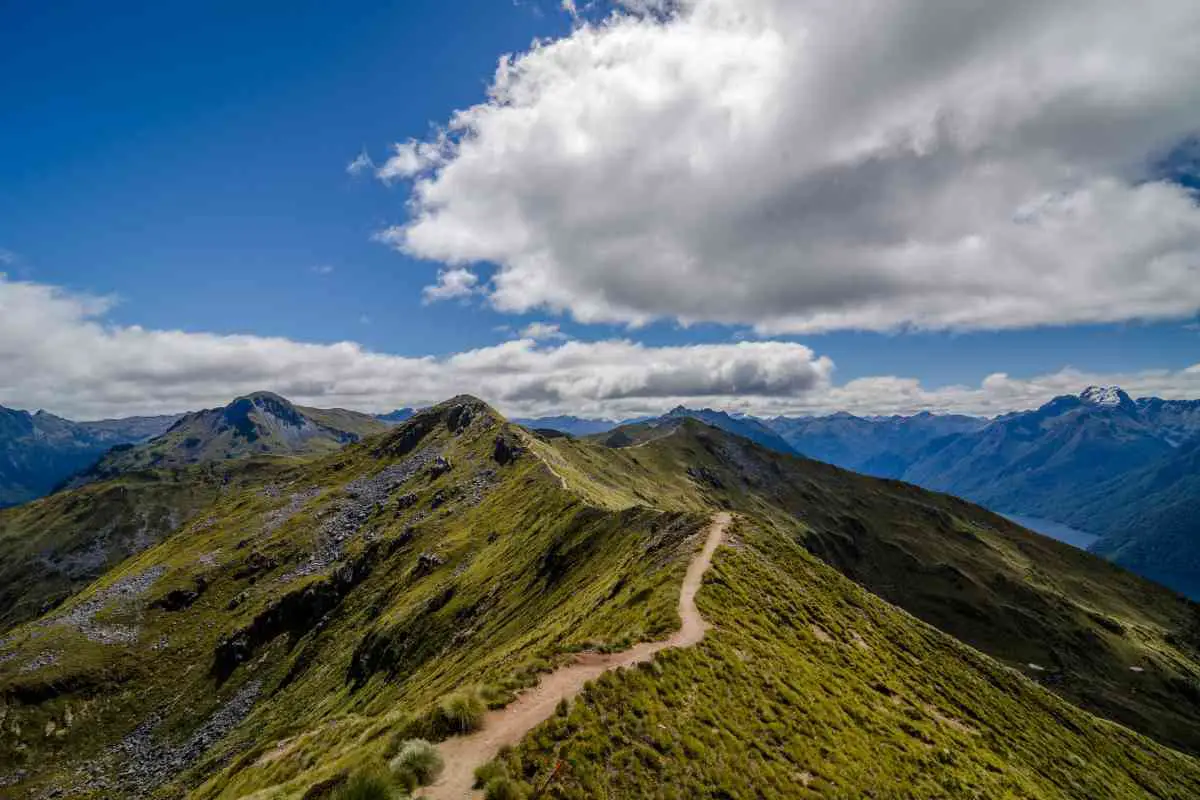The Kepler Track is a popular hiking trail located in Fiordland National Park, New Zealand, and is renowned for its picturesque landscapes and diverse terrain.
As one of New Zealand’s nine Great Walks, the Kepler Track offers a true wilderness adventure, with views of giant beech trees, vast fern forests, and tiny lichens along the way.
Spanning a total distance of 60 kilometers (37 miles), the hiking trail typically takes 3-4 days to complete and is classified as an intermediate, Great Walk/Easier tramping track.
The track loop starts and ends near the town of Te Anau, with numerous huts and camping sites available for overnight stays.
Whether you’re an experienced hiker or a beginner, the Kepler Track provides a memorable outdoor experience with its stunning mountain vistas, lush forests, and serene lakeshores.
Location and Access
The Kepler Track is a 60 km circular hiking trail located in the South Island of New Zealand, near the town of Te Anau in the Fiordland National Park.

The track showcases some of the best features of Fiordland, such as mountains, native forests, waterfalls, and glacier-carved valleys. Wikipedia and 100% Pure New Zealand provide more information on the track and its surroundings.
Access to the Kepler Track is available from two main car parks: the Kepler car park and the Rainbow Reach car park.
The Kepler car park is the most common starting point for hikers and is located at the track’s entrance, while the Rainbow Reach car park provides an alternative entry point 9.5 km from the track’s end. This is a great option for day walkers or those looking to shorten their hike.
Public transport is available from Te Anau to both the Kepler car park and the Rainbow Reach car park. Shuttle services connect Te Anau with these locations, making it a convenient option for those without a car. Ensure to book your shuttle in advance, especially during the busy hiking season.
Track Overview
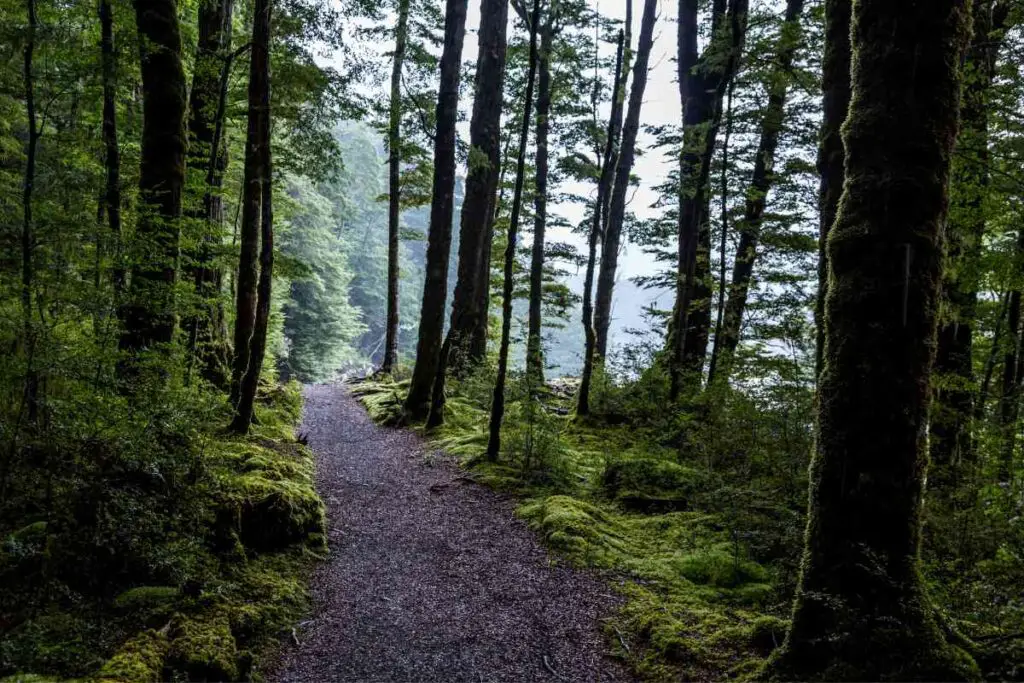
Duration and Difficulty
The Kepler Track is a 60 km (37.3 mi) loop located in Fiordland National Park, New Zealand.
It typically takes hikers 3 to 4 days to complete the trek. The track is classified as intermediate level, making it suitable for most people with average fitness levels.
Highlights
Designed to showcase the best features of Fiordland, the Kepler Track offers numerous awe-inspiring sights and experiences.
Here are some key highlights:
- Mountains: The track traverses mountain ridgelines, providing excellent views of the surrounding peaks.
- Native Forests: Hikers will pass through dense forests of beech trees and other native New Zealand vegetation.
- Waterfalls: The track features numerous waterfalls, with opportunities to stop and admire these natural wonders.
- Glacier-Carved Valleys: As the path winds through the Fiordland, hikers will encounter dramatic, glacier-carved valleys, showcasing the region’s geological history.
Hiking Seasons
The main hiking season for the Kepler Track in New Zealand runs from late spring to early autumn, specifically between October 29 and April 30.
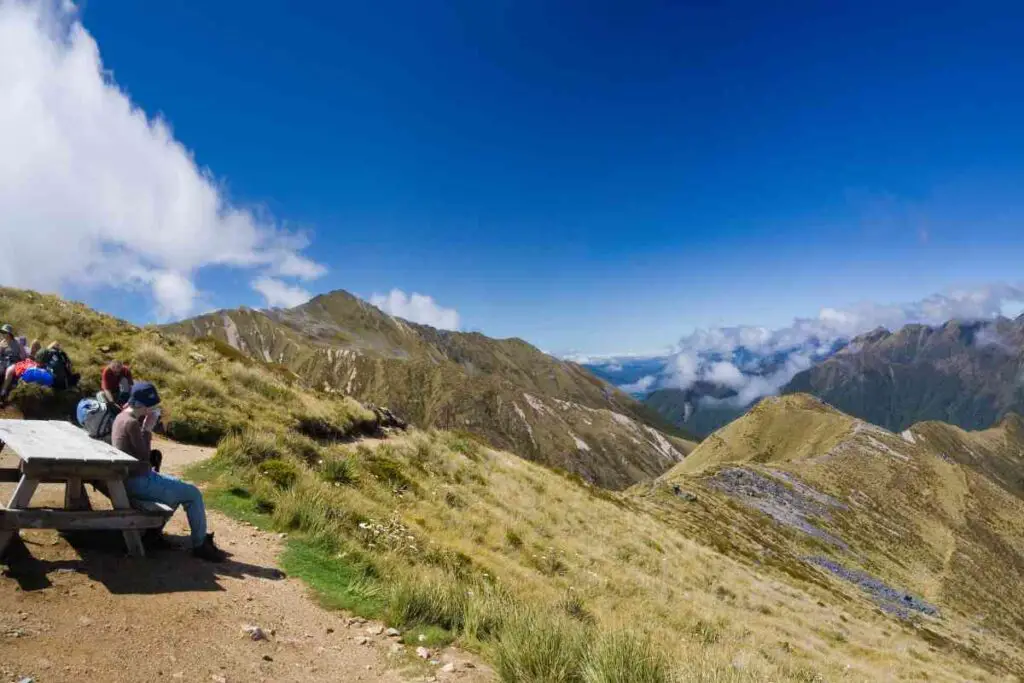
Don’t let the unpredictable autumn weather ruin your hiking experience. Read my other guide to discover the right clothing choices for any type of autumn hike.
During this time, the weather is generally more favourable for hiking, providing ideal conditions for enjoying the beautiful scenery of Fiordland National Park.
While the Kepler Track can still be accessed outside of the main hiking season, it is important to note that facilities such as huts and guided tours may not be available.
Additionally, the weather can be more unpredictable, with increased chances of snow and colder temperatures, making the hike more challenging.
To make your hiking experience smoother and safer, it is highly recommended to book your huts or campsite well in advance, as this popular Great Walk tends to fill up quickly during the main season.
When planning your Kepler Track adventure, keep in mind the following seasonal considerations:
- Late Spring (October-November): Expect longer daylight hours, wildflowers in bloom, and occasional snow on higher elevations.
- Summer (December-February): Warmer temperatures, more stable weather, but also the busiest time on the track.
- Early Autumn (March-April): Cooler temperatures, stunning autumn foliage, and fewer crowds.
- Off-season (May-September): Challenging alpine conditions, limited facilities, and huts open for experienced hikers only.
Accommodation and Facilities
Huts
While hiking the Kepler Track, hikers have the choice to stay in Department of Conservation (DoC) huts. These huts provide bunk beds and shared facilities for a comfortable stay during the trek.
It is important to note that the number of bunks at each hut is limited, so booking in advance is essential to secure a spot. Visit the Kepler Challenge website for more information on hut bookings.
Campsites
For those who prefer a more rustic experience or seek solitude, camping on the Kepler Track is also an option. There are tent sites available at two campsites along the track: Brod Bay and Iris Burn Campsites.
Just like the huts, campsite bookings are necessary to ensure a spot. You can find more information on campsite bookings and facilities offered on the Visit Fiordland website.
Safety and Preparation

Weather Conditions
New Zealand weather can be unpredictable, and the Kepler Track is no exception.
It is important to check the weather forecast before beginning your hike to ensure you are prepared for the potential changes in temperature, rainfall, and wind speed.
Fjordland National Park, where the Kepler Track is located, is known for its high annual rainfall. As a result, it may be wise to pack waterproof gear, such as a raincoat and over-trousers, to stay dry and warm during your journey.
Essential Gear
When hiking the Kepler Track, bringing appropriate equipment is crucial for a safe and enjoyable experience.
Some essential gear to consider includes:
- Backpack – A comfortable and properly sized pack that can hold your supplies for at least three to four days.
- Good-quality hiking boots – Footwear that provides ankle support and grip for uneven terrain.
- Warm clothing – Including thermal layers, a warm hat, gloves, and a jacket to stay warm in cooler temperatures and at higher altitudes.
- Waterproof gear – A raincoat and over-trousers to stay dry during periods of heavy rain.
- Food and water – Adequate supplies for the duration of the track, as there are no food and water sources available on the trail.
- Map and compass – To help with navigation and ensure you stay on the designated track.
- First-aid kit – To treat any injuries or medical emergencies that may arise during the hike.
It is also advisable to inform someone of your hiking plans, including expected departure and return dates, in case of emergencies. Make sure to sign in at hut and campsite visitor books along the way.
Conservation and Environmental Impact
The Kepler Track, located in Fiordland National Park, is managed by the Department of Conservation (DOC) to minimize environmental impact and maintain proper conservation practices. The track’s pristine surroundings and unique flora and fauna have led to various conservation efforts being made in the area.
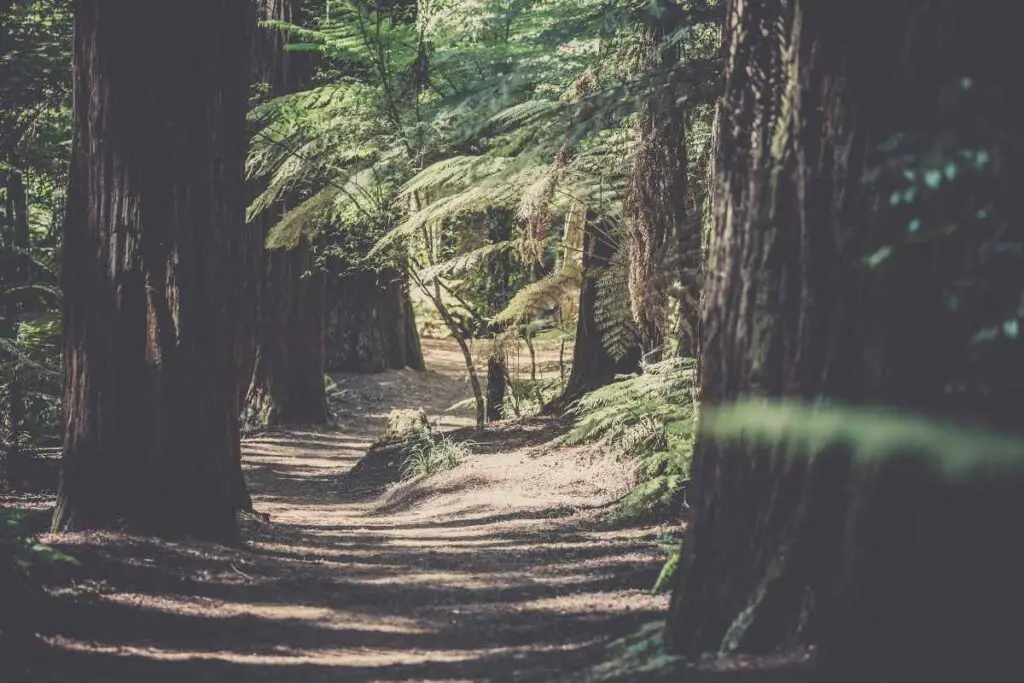
One example of these efforts is the Kids Restore The Kepler initiative, which aims to create a safe environment for native plants and animals in the region. This project engages local children of various ages in learning about conservation through hands-on activities, helping them understand the importance of protecting their natural heritage.
Other conservation efforts near the Kepler Track include the efforts of businesses and tourism operators, showcased on the Fiordland Conservation Projects webpage. These initiatives aim to preserve the integrity of the region while benefiting both locals and tourists alike.
As part of managing the environmental impact on the track, the DOC maintains huts using sustainable systems, such as rainwater collection, solar-powered lighting, and composting toilets. The well-maintained trail system also helps minimize erosion and preserves native ecosystems.
Visitors are encouraged to practice the Leave No Trace principle, ensuring minimal impact on the environment by carrying out all their waste, respecting wildlife, and sticking to designated trails.
Other Nearby Attractions
While exploring the beautiful Kepler Track in New Zealand, you may also want to visit some nearby attractions for an even more memorable experience. A must-visit attraction in the region is the stunning Fiordland National Park (Te Wahipounamu), known for its picturesque fiords, towering peaks, and cascading waterfalls.
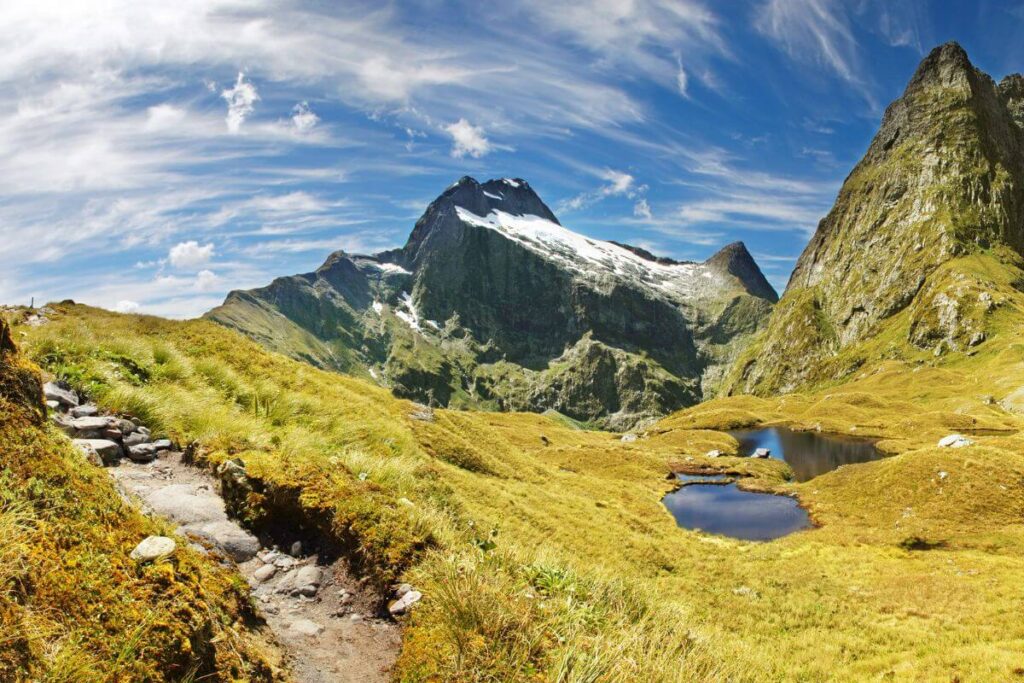
Another incredible attraction close to the Kepler Track is Milford Sound. This breathtaking fiord with steep cliffs and lush rainforests features Mitre Peak, a 1,692-meter mountain that will surely leave a lasting impression. Here, you can go on boat cruises, kayak, or simply admire the awe-inspiring scenery.
Doubtful Sound is another remarkable nearby attraction. Often described as the quieter sibling of Milford Sound, Doubtful Sound offers serene and vast landscapes for you to take in as you explore the region. Embark on a guided tour and be captivated by the majestic waterfalls, towering peaks, and serene waters.
If you’re looking for a unique experience, consider visiting the enchanting Te Anau Glowworm Caves. Discover the magical caves illuminated by glowworms on a guided tour through the labyrinth of limestone passages.
Lastly, for those interested in other walking tracks, the nearby Routeburn Track is highly recommended. It’s one of the shorter Great Walks, taking you through a range of stunning landscapes, from mountain ranges to lush forests.
